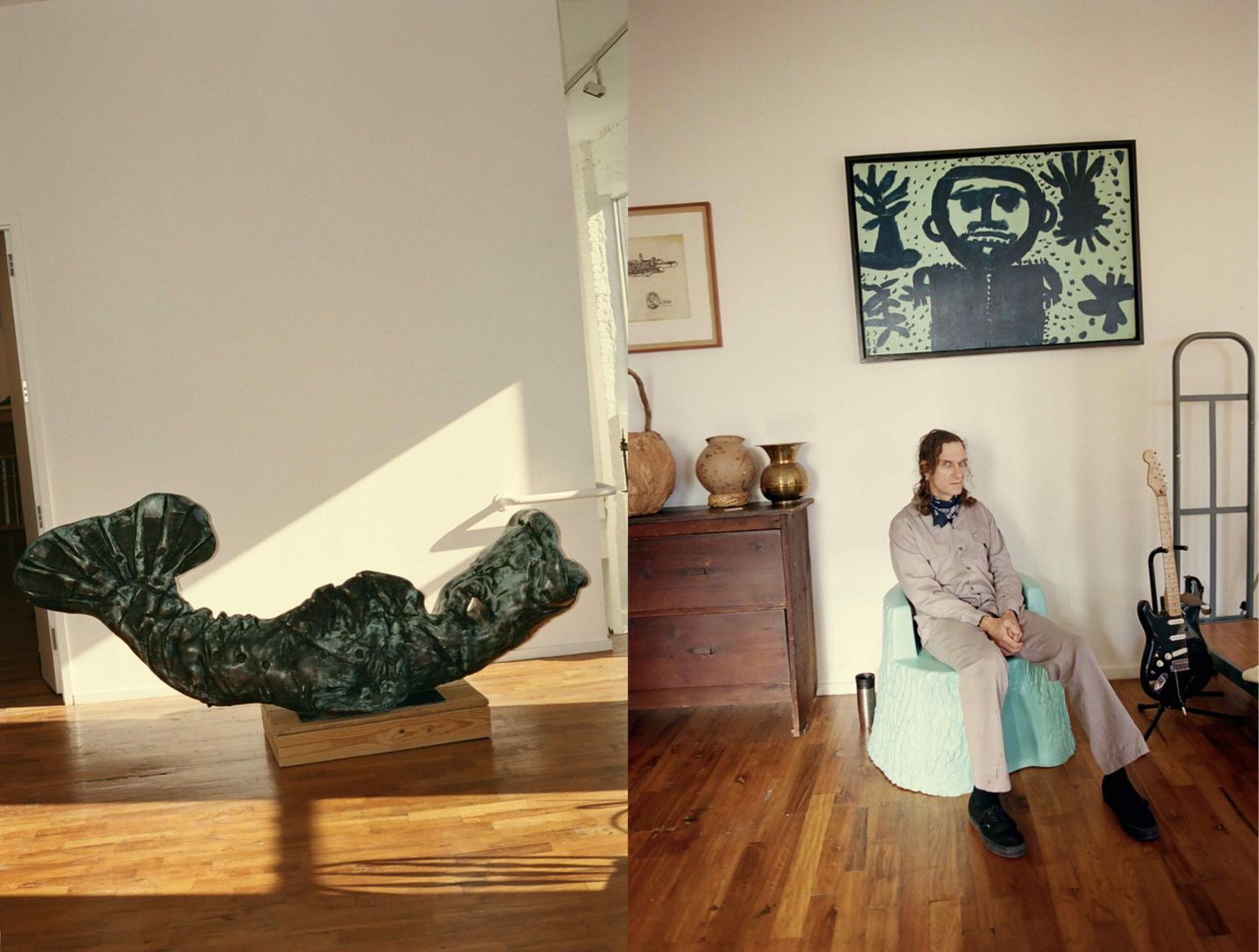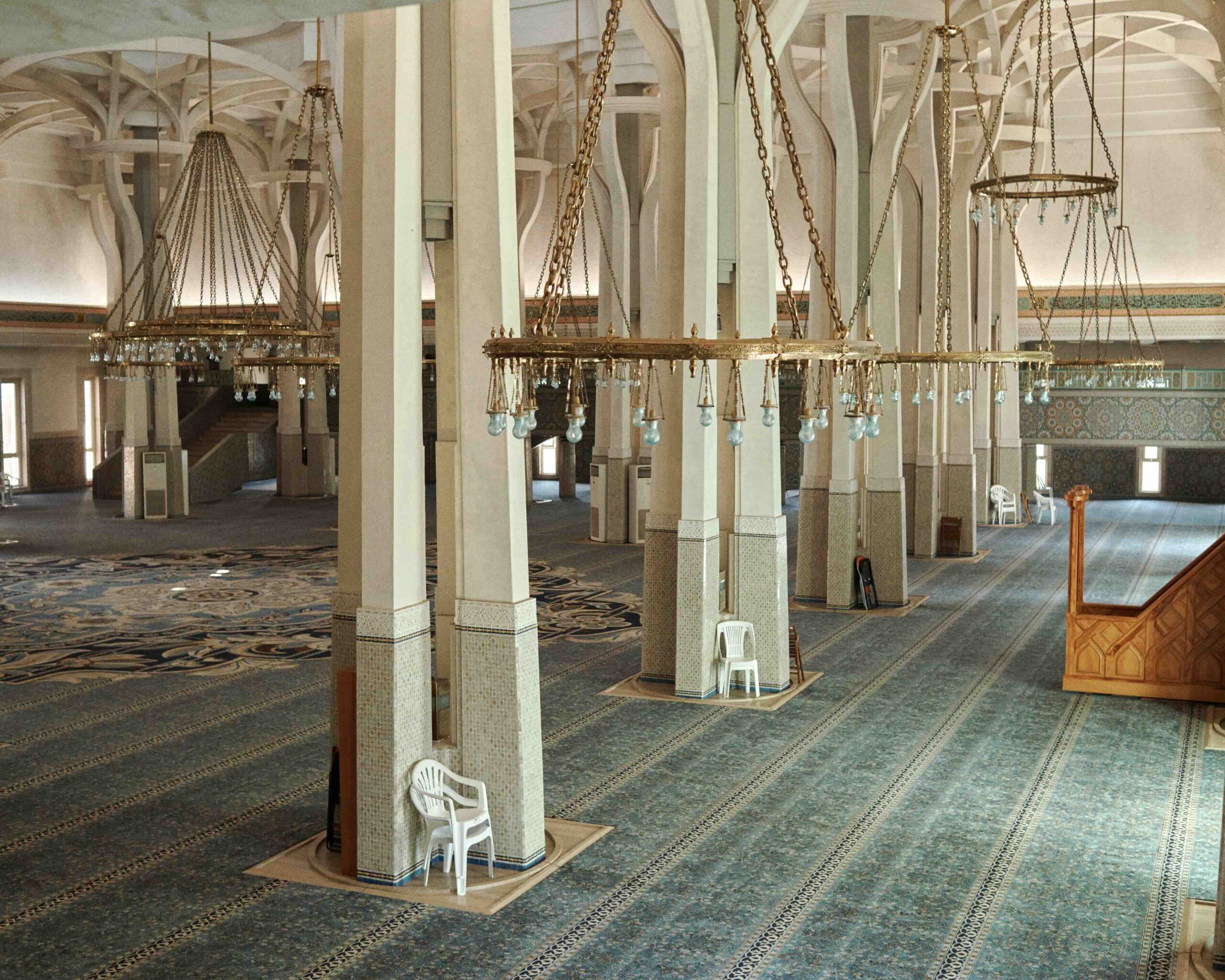The paintings of New York based artist Josh Smith are honest depictions of our human existence. Vibrant abstractions that embrace life as a morphing mess of coherence and contradictions, lights and dark, highs and lows. As his dense brushstrokes animate the canvas through richly colored gestures and recurring motifs, joy, playfulness and sadness interplay just as they do while we all surf the waves of life. I sat down with Josh on the occasion of his latest show JOSH SMITH: OK at Massimo de Carlo gallery in Milan: we talked the process behind the new series of dynamic large scale canvases, the ultimate purpose of his work as an honest visual practice everyone can relate to, and the struggles intrinsic to the artist’s condition. Josh highlighted the importance of letting things go a little in order to enjoy the process and fully experience the simple beauty and privilege of doing art and sharing it with others.
JOSH SMITH IN CONVERSATION WITH MADDALENA IODICE
MI With your last exhibition Keyhole, you amplified your works in terms of scale and energy. This new series seems like a further exploration of that discourse. What was the genesis here?
JS For the past two years I have been painting more pictorially. I would think about an image and learn how to put myself into it. It has become kind of a popular style to paint figurative stuff, so since I have painted abstract work in the past, I thought it would be nice to do that again, and easy. But I realized you can’t really go back, and I had to kind of re-learn it. The Keyhole exhibition was good, but I made this one differently. I wanted this to be more assured. I hate to do the same show. I have never shown in a place like this before, it is such a classical, special gallery, so I really tried to do my best. With abstract painting you can’t know what you are doing, if you know what you are doing, probably you have a problem. You have to destroy anything you begin to understand. With all the paintings I do, when I start to feel comfortable, I kind of destroy them. I want to leave it a little broken, so the viewers can re-assemble it in their head and not feel like I put it in a box and tied it perfectly for them like a product. I wanted people to spend more time figuring it out and the way I do it is that I spend a lot of time with the work. I just try to learn it like you would do with a person.

MI How were you feeling when starting this series? What were you looking for, or aiming at digesting through these works?
JS I do not make the canvases in the structure anymore, I buy them and when they arrive they are pretty much finished. The white is a beautiful object just as it is. So when I take my brush and touch it, I think ‘well that is finished too’, but you know, I can’t do that, so you touch it a few more times and you start to build a world. A lot of parts of these abstract paintings are remainders just of me painting for so many years. I made paintings of my name, I did fishes… I made a lot of messy types of paintings with different subjects and everything is still there for me. I have noticed recently that as a left handed person, I make left handed paintings. I have been trying to turn them so to avoid the left handed feel they have. But any work of art that I make is always what I want. If I don’t want it, nothing comes out.
MI Indeed, some of these paintings show recurring motifs of your work, like you said, fishes, but also suns and palm trees. Is this a lexicon you consciously constructed or was it more intuitive, like it just happened on the canvas and you consciously adopted it just after?
JS There is a different type of reason every time. But to me, it’s like tripping on an idea which then takes shape. There are the sea turtles which were inspired by me living in the south part of America sometimes. I go to the beach down there, and everyone has these stickers on their cars with this shape which reminds an American outsider art motiv. I thought it would be simple but, you know, I make complications within a simple thing. The palm trees… you go to these art houses or art museums and you can tell that people don’t like a lot of it and just find themselves in spaces full of artifacts of a cold world. So what I wanted was to interject real things that reflect my American sort of world and kind of throw off the balance. I always think about the context of my work, and I like the idea that if someone puts one of my paintings somewhere, then their collection has to change or react to it or they’ll have to realize they were not right. Another thing that is unique about my paintings is that they have the appearance anybody could make them. You can see all the brushstrokes, it’s not like a Gerard Richter work, you know? I want my work to be accessible like that, so that somebody who doesn’t even think about art can look at it and see how it was made. I don’t want to be sneaky. I want to show the evidence. I mean, I don’t want to, and it just happens, because it’s me. What I do is my whole life, I don’t do anything else except that. Also, I have been experimenting with bigger canvases. I used to think my paintings were huge and I worked on the same size a lot, but then when I got to these big galleries I realized they just looked pois.
MI Is this size detour something you explored with the New York series you did during Covid?
JS It was actually before, during the Jungle show in 2019 at David Zwirner. I realized that to fill that gallery I had to make some larger paintings and I had to learn how to do it because I was making paintings that fit my body. And these big paintings happen to fit really well here at Massimo de Carlo. But the difference between Keyhole and this show is that I kept going forward and used a little more gas. It is not easy though, a lot of times I’ll have a really really nice painting and just destroy it, which is what originally happened with the painting 2 Chairs.
MI That is interesting, because the painting 2 Chairs really stands out to me as it suggests some sort of quieter dynamism if compared to the others composition and palette. Could you tell me more about it?
JS Well, you can see under it the scars of previous layers. These paintings are not finished, they are done. It is my job but I can’t just work on them forever, and that is why I add borders now. Other times I have used the borders more as part of the painting, but now I use the borders to tell me to leave it alone. To put a bond and seal it up for myself.

MI I’d love to know more about such a concise title: OK. It may sound like “Ok, these paintings are finished and ready to be shown” or “I am ok right now at this time of my life”…
JS I don’t know why, but I had different titles and all sounded a little malevolent. One was Killed the idea… and I am really trying to be less of a negative person, because I can get very dark. Sometimes looking back at my paintings from 5 or 10 years ago, I realize those are illustrations of my depression, and I do not want to be like that my whole life. Even if I am faking my joy, I need to try not to be depressed, so I brought nicer colors, a little better paint, nicer things… It is inevitable and it’s under the surface but ideally I don’t want my art to be an illustration of my depression. I don’t want my paintings to be perceived as difficult to make, I don’t want people to be burdened by my anxiety and stress.

MI The way I see it, is that you put yourself in a position of vulnerability which is hard and requires great honesty toward yourself and the viewers. And I do perceive that honesty! When looking at your work I see how joy interlaces with multiple and complex emotional layers which ultimately makes you, as a spectator, further investigate not only what you see but how it makes you feel ….That is also why I was very interested in the titles you chose. When you look at the abstract essence of these paintings and read their descriptive titles you confront something like a ground out. It is in that ground out that resides the potential for the spectator’s interpretation. Similarly Christopher Wool vanished letters like in TRBL or created incomplete sentences like YOU MAKE ME creating a space for the viewer to complete the experience of art. Is this assonance something you relate to?
JS You know, I never did the titles, but it is a lot more fun to have them and it helps me to remember the paintings too. As for Christopher, I worked with him for seven years and I was very lucky to meet one of the greatest artists alive. The influence of him is countless. What I learned from him is that you need to do everything ten times, test everything, make sure you tried everything and you have let mistakes grow rather than kill them. You have to let them grow like fungus not through just one artwork, but through several artworks. I feel he had an impact on the way I approach the size of my works too. I realized if I make them sort of similar size I could stock them up and kind of hide them from each other and get familiar with the size. You know, you are a writer, you have your piece of paper… I can literally treat them like pieces of paper. Not everyone is gonna be the greatest thing, but everyone is another chance to do something new or good.
Read the full interview on Muse February Issue 61.






